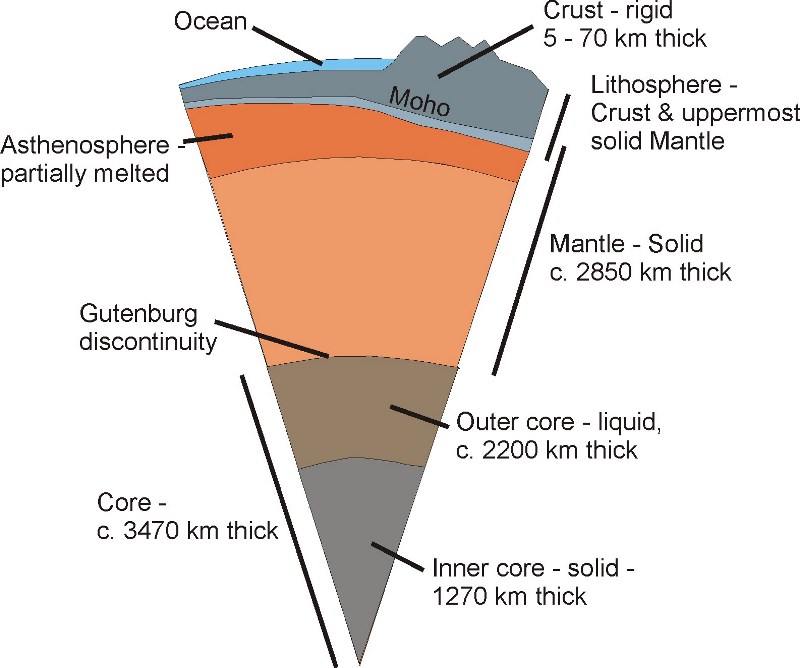UNIT 1 The geosphere
The geosphere is the solid part of the Earth
FORMATION OF THE EARTH
STRUCTURE OF THE EARTH
The geosphere is formed by three main layer:
Crust: Upper most layer, it is a thin and rigid layer. There is huge difference between oceanic crust and continental crust. The oceanic crust is more dense, made up of basalt and, therefore, more thin (up to 10 km) . The continental crust is made up mainly of granite and is more thick (up to 70 km).
Mantle: is located below the crust, is much less rigid than the crust and it can flow. It is made up of peridotite and the most abundant mineral is olivine. The thickness is approximately 2900 km
Core: Is the central layer of the planet and is made up of iron and nickel, there is n outer core which is liquid(from 2900 to 5150 km) , and an inner core which is solid(from 5150 km to Earth's center).
MINERALS
A mineral is a naturally occurring inorganic solid, with a definite chemical composition, and an ordered atomic arrangement.
Properties of minerals
The main properties for our class propourses are:
Color - Although color is often used to describe a mineral, it sometimes isn't the best way to tell one mineral from another as one type of mineral can come in several different colors.
Luster - Luster describes how well a mineral reflects light. Examples of luster include glassy, metallic, brilliant, and dull.
Hardness - The hardness describes how easy it is to scratch the surface of a mineral.
Streak - Streak is the color of the mineral in powdered form. One way to determine the streak is to rub the mineral across a rough hard surface like a tile.
Cleavage - Cleavage describes how a mineral breaks up into pieces. Some minerals break up into small cubes while others may break up into thin sheets.
Density- (or Specific Gravity) - The specific gravity measures the density of the mineral. It is measured in comparison to water where water has a specific gravity of 1.
Check this website to know more about the properties of minerals.
Mosh scale
Scientists often use the Moh's scale to describe hardness. Using the Moh's scale, a "1" is the softest mineral and a "10" is the hardest. One example of hardness is diamond. Diamond has a hardness of 10 because it is the hardest of all the minerals.
ROCKS
Rocks are natural solids made up of minerals
We classify the rocks according to its origin:
ROCK CYCLE
On rock can be transformed in other types of rocks, the process is slow but continuous:
What do we use minerals for?
What do we use rocks for?
In this activity you are invited to do a crystal at your home!
If you do so, you'll get a bonus of 0,5 points in a future exam! Check the link and check the instructions






No hay comentarios:
Publicar un comentario